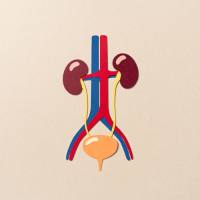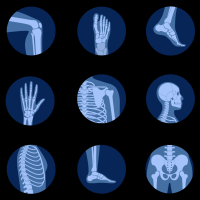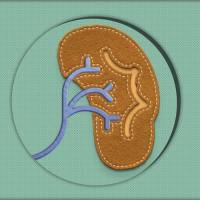【每日动态】JAMA社论:毛细支气管炎的治疗该如何决策?
Bronchiolitis is a viral lower respiratorytract infection characterized by increased respiratory effort and wheeze inyoung infants. Optimal clinical management has been difficult to define becausebronchiolitis is a heterogeneous clinical condition and definitive research islacking. During the past 3 decades, racemic epinephrine, bronchodilators, oralcorticosteroids,inhaled corticosteroids, normal saline, and hypertonic normalsaline have been suggested as potential therapeutic options for bronchiolitis,but a single best practice has not emerged. In addition to the therapeuticuncertainty, clarity is lacking about admission and discharge criteria and the long-termeffectofhypoxia. Coupledwith these challenges are data that indicate hospitalizationrates for bronchiolitis doubled from1980 to 1996,1 concomitantwith theintroduction of oxygen saturation monitoring. Data from2011 indicate that “acute bronchitis” in infants younger than 1 yearremains the most common reason for hospital admission (184 hospitalizations per10 000population).2 Inmany emergency departments, the oxygen saturation readinghas become part of the initial set of vital signs and is used by clinicians toguide their clinical assessment of illness severity, their therapeutic approachto the patient, and their decisions about safe discharge, either from theemergency department or an inpatient facility.
In this issue of JAMA, Schuh andcolleagues3 present the results of a randomized clinical trial of infants withbronchiolitis seen in an emergency department who had actual oxygen saturationlevels or manipulated oxygen values displayed. Thestudy enrolled 213 infantsaged1 through12months with mild to moderate bronchiolitis (oxygen saturation ≥88% andRespiratory DiseaseAssessment Instrument [RDAI] score >8) who presented to an emergencydepartment. After written informed consent was obtained, treatingphysicianswere provided with either the true oxygen saturation reading or a readingthat had been “manipulated” by the oxygen saturationmonitor toappear3%higherthan the truereading.At baseline the infants in the 2 groupswerecomparable,with similar RDAI scores and clinical characteristics. Theirtreatment while in the emergency department was similar. The primary outcome washospitalization for bronchiolitis within 72 hours of enrollment, defined asadmission to an inpatient ward or a decision by the emergency departmentphysician to provide active hospital care for more than 6 hours because ofconcerns about respiratory distress.
In the true oxygen saturation group, 44 of108 patients (41%) were hospitalized within 72 hours, whereas among 105patients in the artificially inflated oxygen saturation group, 26 patients(25%) were hospitalized (difference, 16% [95% CI, 3.6%-28.4%], P = .005). Anumber of additional analyses support the findings, including one controlling forclustering at the physician level. Subsequent unscheduled medical visits forbronchiolitis were similar in the 2 groups.
The authors recognize a number oflimitations. The study was conducted at a single center, a small number of patientswere enrolled, 35% of eligible families refused to participate, and a limitednumber of infants with low oxygen saturations were enrolled. Yet a number ofsensitivity analyses are consistent with the primary outcome and reflect theexperience of many physicians who have been bedeviled by the reliance on oxygensaturation readings to make clinical decisions, particularly for infants with aselflimited disease who are mildly ill.
Is it ethical to deceive physicians aboutreal findings? The authors did adhere to important principles of research.First, they obtained informed written consent from the parents, although
not from the physicians. Second, theauthorswent to great length to ensure that the study was safe. They only enrolledpatientswithmildormoderate bronchiolitis. Infantswith oxygen saturations less than 88% wereexcluded. Although some physicians might be concerned that infants with oxygen
saturations less than 90%were included,there is no conclusive evidence that transienthypoxia in this range doesharm tootherwisewell children. In addition, all infantswere placed onconcealedcontinuousoximetersprogrammedtoalarm,with oxygen saturations less than 92% prompting clinicalreassessment.
Displaying altered oximetry readings hasbeen used in previous neonatal studies.4,5 There is unease when physicians arepresentedwith artificially altered data, but for some research questionsthismay be necessary.For all research studies it is necessary to ensure thatthe study is safe and patients are fully informed of all risks.
Although advances in medicine and clinicalresearch have elucidated best practice for the treatment of common disorderssuch as fever in infants and children, childhood asthma, and common bacterialinfections, there remains continued uncertainty about the optimal approach totreatment of young children with a clinical diagnosis of bronchiolitis.
The study by Schuh et al thus highlightsthe challenge of emergency department clinicians and primary care providers facedwith therapeutic dilemmas without clear guidance from the literature. In suchcases, clinicians must rely on their clinical judgment and supportinglaboratory data to
develop a plan for an individual patientthat is safe, efficient, cost-effective, and uses inpatient facilitiesappropriately.
The study by Schuh et al is consistent withthe work of Corneli and the PECARN study group, who previously reported thathypoxia as measured by oxygen saturations less than 94%was the best predictorof inpatient hospitalizations in a cohort of 598 patients with moderate tosevere
bronchiolitis.6 The study by Corneli et alassessed clinical decision making, that is, which data are used by emergencydepartment physicians to identify patients who require hospitalization, and didnot study the appropriate use of oximetry in the decision-making process. Schuhet al attempted to answer a difficult question, the appropriateness of oxygensaturation in the clinical setting. Their data demonstrate that patients withlower oxygen saturations are treated more cautiously by emergency departmentphysicians and appropriately raise the question of howbest to use oximetry datain the clinical evaluation of patientswith bronchiolitis. This study must becarefully considered so as not to give the impression that oxygen saturationdata are not helpful in the clinical setting, especially because there were fewpatients with significant hypoxia, precluding further analysis of thishigh-risk group. Although Schuh et al concluded their study by suggesting
that “oxygen saturation should not be the only factor in the decision toadmit andmay need to be reevaluated,” clinicians must be cautious before generalizing the results of thisstudy and minimizing the effect of oxygen saturation data. Similar to previousstudies that have attempted to define and failed to identify the optimaltherapeutic intervention for bronchiolitis, perhaps the same is true ofoximetry. This group of patientswill continue to benefit fromthe expertclinical assessments of experienced clinicians who should use the results ofthe study by Schuh et al to be certain that a single laboratory parameter suchas oxygen saturation is not used in isolation of other elements of the clinicalevaluation of patients.
All data must be assimilated to identifythe best clinical practice for patients with bronchiolitis.
The therapeutic and prognostic uncertaintyof bronchiolitis will continue. But it is now clear that the oxygen saturation readingcan influence decision making inways thatmany clinicians have thought likely—overreliance on physiologicinformation of uncertain importance derived froma medical device.
While physicians seek to improve thescience of clinical decision making, the art of medicine and clinicalassessment should not be trumped by overreliance on a single physiologic parameter.The care of patients with bronchiolitis will continue to improve asexperiencedphysicians emphasize and continue to use a complete clinicalevaluation and assessment as the most important element in the care of theseinfants and children.















































